 W
W1541 Ultimate is a peripheral, primarily an emulated floppy disk and cartridge emulator based on the FPGA Xilinx XC3S250E, for the Commodore 64 home computer. It became available in 2008.
 W
WAMX Mouse was a 1985 computer mouse sold by the British company Advanced Memory Systems. The 3 button mouse was sold with a dedicated interface, and usually with some accompanying software such as AMX Art, AMX Pagemaker, AMX Palette, AMX Control and Icon Designer.
 W
WThe Compact Cassette or Musicassette (MC), also commonly called the tape cassette, cassette tape, audio cassette, or simply tape or cassette, is an analog magnetic tape recording format for audio recording and playback. It was developed by Philips in Hasselt, Belgium, and introduced in September 1963. Compact Cassettes come in two forms, either already containing content as a prerecorded cassette (Musicassette), or as a fully recordable "blank" cassette. Both forms are reversible by the user.
 W
WThe RAMLink was one of several RAM expansion products made by Creative Micro Designs (CMD) for Commodore's C64/128 home computers. The RAMLink was intended as a third-party alternative, successor and optionally companion to Commodore's own 17xx-series REU RAM expansion cartridges.
 W
WThis article is about the various external peripherals of the Commodore 64 home computer. Due to the backwards compatibility of the Commodore 128, most peripherals will work on that system, as well. There's some compatibility with the VIC-20 and PET too.
 W
WThe Commodore serial IEEE-488 bus, is Commodore's interface for primarily magnetic disk data storage and printers for the Commodore 8-bit home/personal computers, notably the VIC-20, C64, C128, Plus/4, C16 and C65.
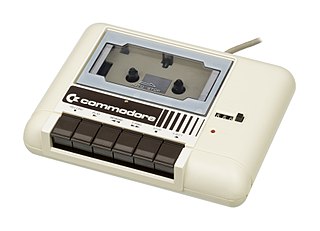 W
WThe Commodore 1530 (C2N) Datasette, later also Datassette, is Commodore's dedicated magnetic tape data storage device. Using compact cassettes as the storage medium, it provides inexpensive storage to Commodore's 8-bit home/personal computers, notably the PET, VIC-20, and C64. A physically similar model, Commodore 1531, was made for the Commodore 16 and Plus/4 series computers.
 W
WCommodore's RAM Expansion Unit (REU) range of external RAM add-ons for their Commodore 64/128 home computers was announced at the same time as the C128. The REUs came in three models, initially the 1700 (128 KB) and 1750, and later the 1764.
 W
WThe Exatron Stringy Floppy is a continuous loop tape drive developed by Exatron.
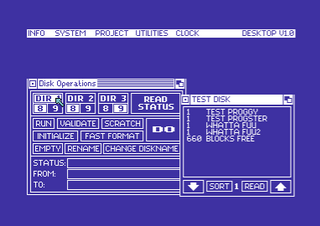 W
WThe Final Cartridge III was a popular extension cartridge which was created for the Commodore 64 and Commodore 128, produced by the Dutch company Riska B.V. Home & Personal Computers. It offered a fast loader, increasing the speeds of the disk drive, and a freezer, allowing the program execution to be stopped to be resumed later.
 W
WThe KoalaPad is a graphics tablet, released in 1983 by U.S. company Koala Technologies, for the Apple II, TRS-80 Color Computer, Atari 8-bit family, and Commodore 64, as well as for the IBM PC.
 W
WRomantic Robot is a small independent British company that publishes classical music recordings. In the 1980s it designed and produced peripherals and software for home computers.
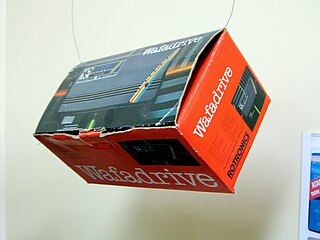 W
WThe Rotronics Wafadrive was a continuous tape loop storage peripheral launched in late 1984 for the Sinclair ZX Spectrum 8-bit home computer, intended to compete with Sinclair's ZX Interface 1 and ZX Microdrive.
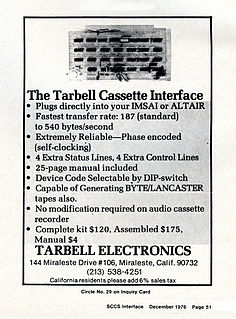 W
WThe Tarbell Cassette Interface is an expansion card for use with the Altair 8800 early personal computer, or other systems using the Altair's S-100 bus. It was designed by Don Tarbell and sold by Tarbell Electronics as early as 1976. At the time, it was considered to be fast, reliable, and popular. While supporting the 1975 Kansas City (Byte/Lancaster) standard, it also introduced a much faster Tarbell standard which became a de facto standard for compact cassette data storage.
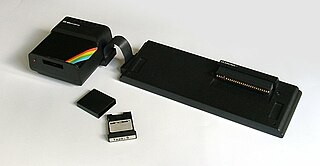 W
WA peripheral from Sinclair Research for its ZX Spectrum home computer, the ZX Interface 1 was launched in 1983. Originally intended as a local area network interface for use in school classrooms, it was revised before launch to also act as the controller for up to eight ZX Microdrive high-speed tape-loop cartridge drives. It also included a DE-9 RS-232 interface capable of operating at up to 19.2 kbit/s. At hardware level it was fundamentally a voltage adaptor, the serial protocol being implemented in software by bit-banging. This led to problems when receiving data, but not when transmitting.
 W
WThe ZX Interface 2 is a peripheral from Sinclair Research for its ZX Spectrum home computer released in September 1983. It has two joystick ports and a ROM cartridge slot, which offers instant loading times. The joystick ports are not compatible with the popular Kempston interface, and thus do not work with most Spectrum games released prior to the launch of the ZX Interface 2. In addition, the pass-through expansion bus provided was stripped, only allowing a ZX Printer to be attached.
 W
WThe ZX Microdrive is a magnetic tape data storage system launched in July 1983 by Sinclair Research for its ZX Spectrum home computer. It was proposed as a cheaper alternative to the floppy disk, but it suffered from poor reliability and lower speed. The Microdrive technology was later also used in the Sinclair QL and ICL One Per Desk personal computers. The minimum storage capacity of a Microdrive tape cartridge was 85 KB.
 W
WThe Sinclair ZX Printer is a spark printer which was produced by Sinclair Research for its ZX81 home computer. It was launched in 1981, with a recommended retail price of £49.95.